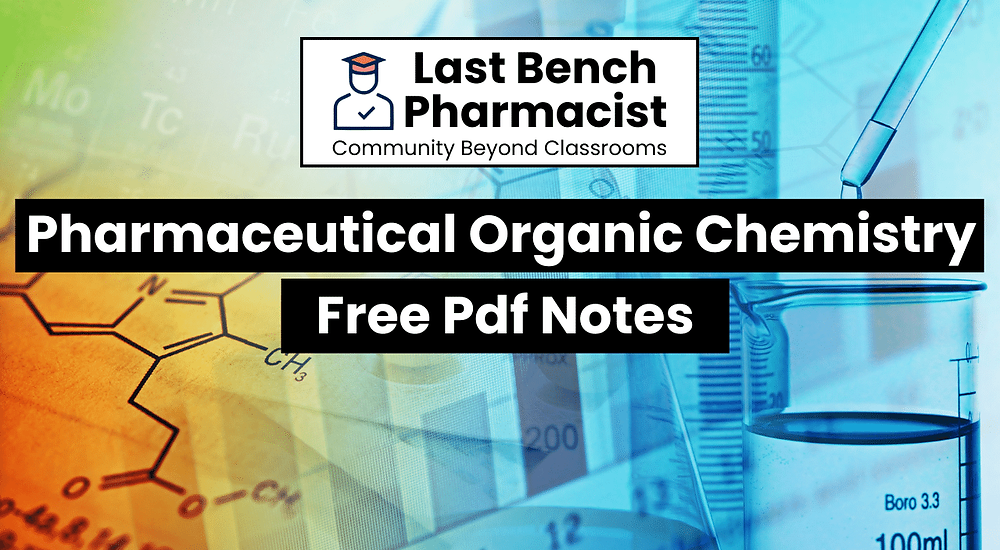



#bpharmpdfnotes #bpharmorganicchemistrynotes #bpharmpdfnotes
B.Pharm Unit 5 is ready to tantalize your curiosity with two of life’s most fascinating subjects: the intricate workings of the reproductive system and the captivating science of genetics. But fear not, aspiring pharmacists! This blog is your fertility goddess and DNA decoder, delivering free B Pharm Pharmaceutical Organic Chemistry Pdf Notes For Free, captivating visuals, and insider tips to guide you through this wondrous journey of creation and inheritance.
Classification, nomenclature and isomerism:-
Classification of Organic Compounds Common and IUPAC systems of nomenclature of organic compounds (up to 10 Carbons open chain and carbocyclic compounds) Structural isomerisms in organic compounds
Alkanes*, Alkenes* and Conjugated dienes*
SP3 hybridization in alkanes, Halogenation of alkanes, uses of paraffins. Stabilities of alkenes, SP2 hybridization in alkenes E1 and E2 reactions – kinetics, order of reactivity of alkyl halides, rearrangement of carbocations, Saytzeffs orientation and evidences. E1 verses E2 reactions, Factors affecting E1 and E2 reactions.
Ozonolysis, electrophilic addition reactions of alkenes, Markownikoff’s orientation, free radical addition reactions of alkenes, Anti Markownikoff’s orientation.
Stability of conjugated dienes, Diel-Alder, electrophilic addition, free radical addition reactions of conjugated dienes, allylic rearrangement
Alkyl halides*
SN1 and SN2 reactions – kinetics, order of reactivity of alkyl halides, stereochemistry and rearrangement of carbocations. SN1 versus SN2 reactions, Factors affecting SN1 and SN2 reactions Structure and uses of ethylchloride, Chloroform, trichloroethylene, tetrachloroethylene, dichloromethane, tetrachloromethane and iodoform.
Alcohols*– Qualitative tests, Structure and uses of Ethyl alcohol, Methyl alcohol, chlorobutanol, Cetosteryl alcohol, Benzyl alcohol, Glycerol, Propylene
Carbonyl compounds* (Aldehydes and ketones)
Nucleophilic addition, Electromeric effect, aldol condensation, Crossed Aldol condensation, Cannizzaro reaction, Crossed Cannizzaro reaction, Benzoin condensation, Perkin condensation, qualitative tests, Structure and uses of Formaldehyde, Paraldehyde, Acetone, Chloral hydrate, Hexamine, Benzaldehyde, Vanilin, Cinnamaldehyde.
Carboxylic acids*
Acidity of carboxylic acids, effect of substituents on acidity, inductive effect and qualitative tests for carboxylic acids ,amide and ester Structure and Uses of Acetic acid, Lactic acid, Tartaric acid, Citric acid, Succinic acid. Oxalic acid, Salicylic acid, Benzoic acid, Benzyl benzoate, Dimethyl phthalate, Methyl salicylate and Acetyl salicylic acid
Aliphatic amines* – Basicity, effect of substituent on Basicity. Qualitative test, Structure and uses of Ethanolamine, Ethylenediamine, Amphetamine